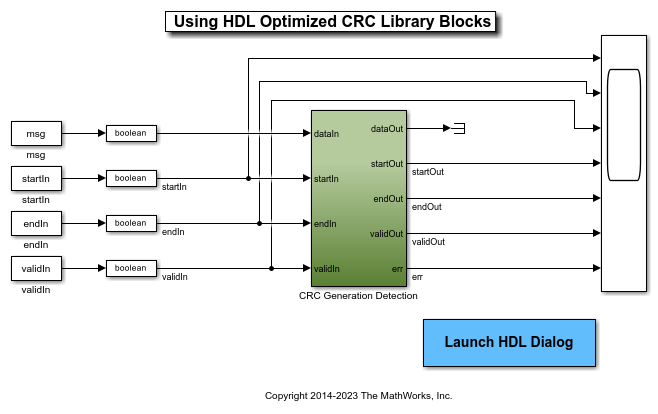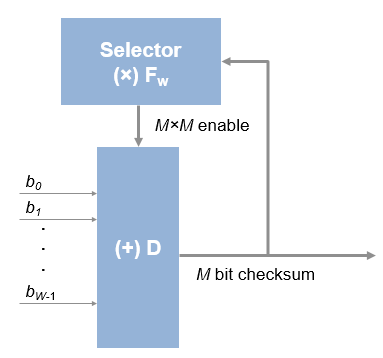General CRC Generator HDL Optimized
Generate CRC code bits and append them to input data
Libraries:
Communications Toolbox HDL Support /
Error Detection and Correction /
CRC
Description
The General CRC Generator HDL Optimized block, which is similar to the General CRC Generator block, generates a cyclic redundancy check (CRC) checksum and appends it to the input message. The General CRC Generator HDL Optimized block processing is optimized for HDL code generation. Instead of processing an entire frame at once, the block accepts and returns a data sample stream with accompanying control signals. The control signals indicate the validity of the samples and the boundaries of the frame. To achieve higher throughput, the block accepts vector data up to the CRC length and implements a parallel architecture.
Examples
Ports
Input
Output
Parameters
Algorithms
References
[1] Campobello, G., G. Patane, and M. Russo. “Parallel Crc Realization.” IEEE Transactions on Computers 52, no. 10 (October 2003): 1312–19. https://doi.org/10.1109/TC.2003.1234528.
Extended Capabilities
Version History
Introduced in R2012a


